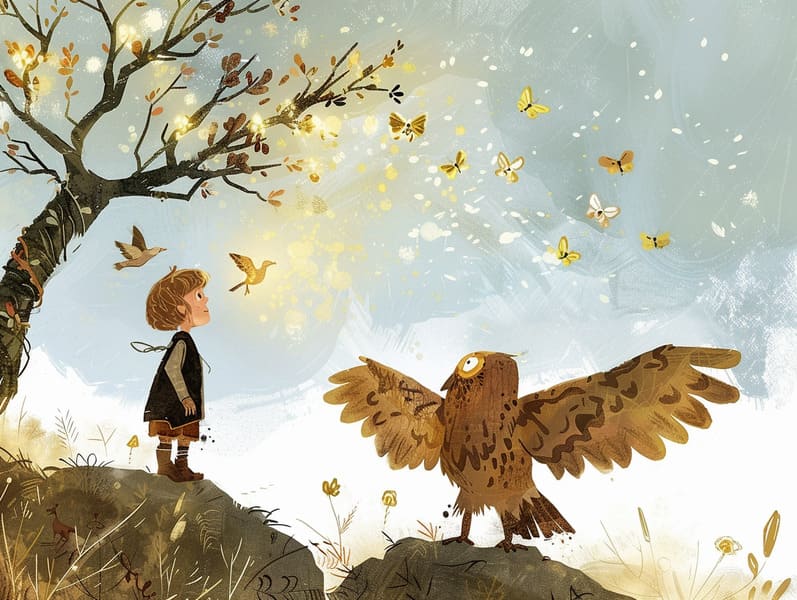The Magic of Nighttime Narratives: Establishing Cherished Occasions with Your Little Ones
The Magic of Nighttime Narratives: Establishing Cherished Occasions with Your Little Ones
Blog Article

Bedtime is a treasured time for adults and their kids. It’s a chance to ease into rest, hug close, and share the beauty of stories.
For centuries, nightly tales for children have been a esteemed legacy, offering more than just a way to fall asleep. They provide an opportunity for connection, education, and stimulating creativity.
The Key Benefits of Bedtime Stories
Bedtime stories for kids serve more than a way to complete the day. They play a significant role in a child’s evolution and in nurturing the guardian-child tie. Here’s why they are important:
1. Together Time: Telling bedtime tales builds a special bonding moment between caregivers and children. It’s a moment of affection that helps children feel secure and safe.
2. Language Skills: Hearing tales helps children develop their language acquisition. They learn new words, understand syntax, and boost their comprehension and analytical skills abilities.
3. Creative Development: Nightly stories move them to enchanted worlds, stimulating imagination. They visualize characters, settings, and adventures, which sparks their creative thinking.
4. Emotional Intelligence: Nighttime tales often feature characters facing issues and feelings. These accounts help kids handle and work through their own moods, fostering emotional maturity.
5. Cognitive Development: Paying attention to a narrative helps children develop mindfulness, remembering, and analytical skills. They gain to follow stories, remember details, and anticipate results.
Making Bedtime Stories a Nightly Ritual
Building a nightly ritual that has sharing tales is manageable and worthwhile. Here’s how to make it a cherished part of your nightly ritual:
1. Select a Comfortable Location: Choose a snug place where you and your child can cuddle without distractions. A peaceful bed or a quiet reading nook works ideally.
2. Establish a Routine Time: Set a routine time each night for tales. Dependability helps children be prepared and makes the tradition easier to copyright.
3. Pick Stories for Their Age: Pick tales that are tailored to your child’s understanding. Toddlers might prefer visual books with straightforward tales, while grown children may be drawn to novels with more intricate narratives.
4. Bring the Story to Life: Make sure the tale feel vivid by trying different voices and tones, adding noises, and asking your child to engage. Ask details about the story to keep them focused.
5. Make a Calm Setting: Dim the lights, use whispers, and create a tranquil environment to help your child wind down.
Locating Top Bedtime Stories
There are varied choices where you can find great bedtime stories for children. kids stories Here are some options to look at:
1. Children’s Literature: Go to your community library or bookstore to find a large selection of bedtime stories for kids. Going through the books together can be a entertaining activity that also gives children to choose stories that capture their interest.
2. Online Sources: There are many places online that offer free bedtime stories. Sites like free story websites provide a variety of short stories for kids that you can access. These choices are great for finding new and diverse stories without payment.
3. Apps and Audiobooks: For nights when you’re too worn out to read, try audiobooks or storytelling apps. These can provide a quiet narration to read your child a story, ensuring they still get their bedtime story fix. Apps often offer interactive elements that can keep kids interested further.
4. Tailored Stories: Design your own stories reflecting your child’s experiences. Personalized stories can be extremely engaging and meaningful. You can incorporate your child in the storytelling process, making them a part of the adventure.
Why Short Stories Work
Compact tales for little ones are quite beneficial for bedtime. They provide all the good aspects of longer stories but are more short, making them perfect for winding down before sleep. Here’s why short stories are a good choice:
1. Effortless to Follow: Concise narratives are simple and easy for kids to get, even after a long day. They can promptly grasp the plot and enjoy the story without becoming uninterested.
2. Immediate Attention: Concise stories quickly engage children, grabbing their engagement and imagination. This makes them perfect for keeping bedtime rituals manageable yet enjoyable.
3. Diverse Options: Compact stories make possible for variety in your bedtime storytime. You can opt for a different story each night, keeping the habit interesting and exciting for your child.
4. Time-Saving: For busy parents, to-the-point tales are a quick way to make sure children still get their nightly dose of storytelling. They fit well into a crowded schedule while still offering the full good points of a bedtime story.
The Joy of "Read Me a Story"
The simple phrase, “Tell me a story,” can offer a world of magic for children. Complying to this request not only satisfies a child’s requirement for attention and engagement but also creates lasting moments. Here’s why it’s enchanting:
1. Link: Storytelling to your child develops a deep emotional link. It’s a time for attachment, sharing, and bonding.
2. Practice: Developing a bedtime story habit creates a cherished tradition that children wait for every night. It’s a custom that can be passed down through generations.
3. Learning and Growing Together: As you read aloud, you’ll experience your child’s growth and progress. Their queries, reactions, and understanding of the stories progress, offering insights into their developing minds.
4. Comfort Zone: Bedtime stories provide a safe space for children to navigate emotions, face fears, and find comfort in the familiar presence of a parent.
End Thoughts
Bedtime stories for kids are a effective tool for encouraging a child’s maturation and establishing unforgettable experiences of connection.